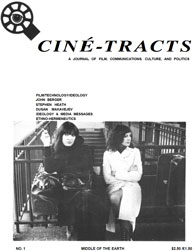On The Edge
 Saturday, January 21, 2006 at 10:59AM
Saturday, January 21, 2006 at 10:59AM In my last posting I recommended, The Edge website and the Dangerous Ideas that a group of authors presented at the request of John Brockman, the editor and publisher of the site. As a reminder the question was:
The history of science is replete with discoveries that were considered socially, morally, or emotionally dangerous in their time; the Copernican and Darwinian revolutions are the most obvious. What is your dangerous idea? An idea you think about (not necessarily one you originated) that is dangerous not because it is assumed to be false, but because it might be true?
A large number of people, mostly scientists contributed their thoughts to the discussion and the actual transcript of the contributions runs to 145 pages.
Due to a back injury which was excruciating, I managed to find some time between medications and rest to read the compilation and here are some comments.
A common theme throughout is the concern shown by the scientists for the effects of religion upon human thinking and ways of acting. Much of this is a reaction to the implications and wide-ranging effects of efforts to install 'intelligent design' into the curriculum of grade school children in the United States. Much of the wind was taken out of the sails of the intelligent design movement by the recent judgement in the Dover case. You can read the judgement here. The judge is a Bush appointee and distinguished himself with a clear and empirical statement on the illusions and intellectual dishonesty of intelligent design.
The Edge authors spend a lot of time articulating the relationship between Darwin, quantum theory and questions of time, space and culture. In the context of a society that seems to be obsessed with religion and religious metaphors, their contributions provocatively ask questions about materiality and what science can say about the universe, its history and characteristics and the role of humans in determining how the universe is understood. There are many pieces that raise wonderful questions about how all of this can be researched, what models, scientific and social scientific are available to comprehend the ideas and beliefs that humans find attractive.
Here is a quote from the editor about the purpose of raising 'dangerous ideas.'
Something radically new is in the air: new ways of understanding physical systems, new ways of thinking about thinking that call into question many of our basic assumptions. A realistic biology of the mind, advances in evolutionary biology, physics, information technology, genetics, neurobiology, psychology, engineering, the chemistry of materials: all are questions of critical importance with respect to what it means to be human. For the first time, we have the tools and the will to undertake the scientific study of human nature.
Another thread that is followed by many of the authors explores human consciousness, the brain and the relationship between mind, matter and thought. The neurosciences are in the midst of a revolution and as we learn more about the way the brain works, many importsnt questions are being raised about consciousness. One of the most interesting arguments is that neuroscientists now accept that a great deal of what goes on in the mind is unconscious, thus taking an intuition that Freud had and giving it not so much emprical velidity as some limited truth value. This means that much of what happens in the brain never reaches the conscious mind. The questions of how that affects human thought and perception remains an open one.
I could go on. The inventory of ideas and debates is wonderful. Strongly recommended!



